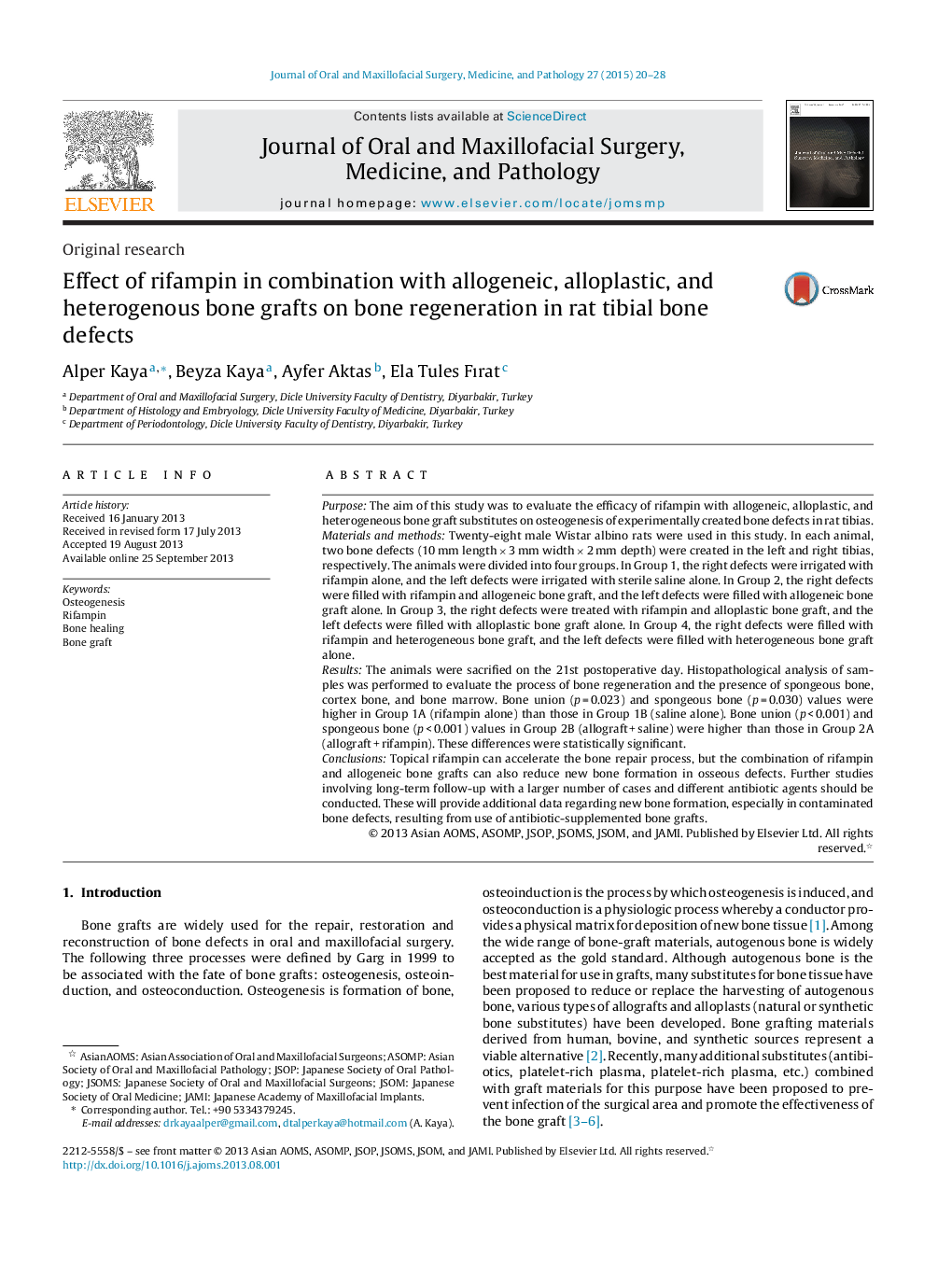| Article ID | Journal | Published Year | Pages | File Type |
|---|---|---|---|---|
| 3159804 | Journal of Oral and Maxillofacial Surgery, Medicine, and Pathology | 2015 | 9 Pages |
PurposeThe aim of this study was to evaluate the efficacy of rifampin with allogeneic, alloplastic, and heterogeneous bone graft substitutes on osteogenesis of experimentally created bone defects in rat tibias.Materials and methodsTwenty-eight male Wistar albino rats were used in this study. In each animal, two bone defects (10 mm length × 3 mm width × 2 mm depth) were created in the left and right tibias, respectively. The animals were divided into four groups. In Group 1, the right defects were irrigated with rifampin alone, and the left defects were irrigated with sterile saline alone. In Group 2, the right defects were filled with rifampin and allogeneic bone graft, and the left defects were filled with allogeneic bone graft alone. In Group 3, the right defects were treated with rifampin and alloplastic bone graft, and the left defects were filled with alloplastic bone graft alone. In Group 4, the right defects were filled with rifampin and heterogeneous bone graft, and the left defects were filled with heterogeneous bone graft alone.ResultsThe animals were sacrified on the 21st postoperative day. Histopathological analysis of samples was performed to evaluate the process of bone regeneration and the presence of spongeous bone, cortex bone, and bone marrow. Bone union (p = 0.023) and spongeous bone (p = 0.030) values were higher in Group 1A (rifampin alone) than those in Group 1B (saline alone). Bone union (p < 0.001) and spongeous bone (p < 0.001) values in Group 2B (allograft + saline) were higher than those in Group 2A (allograft + rifampin). These differences were statistically significant.ConclusionsTopical rifampin can accelerate the bone repair process, but the combination of rifampin and allogeneic bone grafts can also reduce new bone formation in osseous defects. Further studies involving long-term follow-up with a larger number of cases and different antibiotic agents should be conducted. These will provide additional data regarding new bone formation, especially in contaminated bone defects, resulting from use of antibiotic-supplemented bone grafts.
